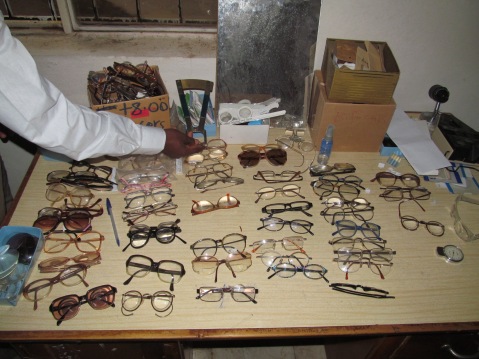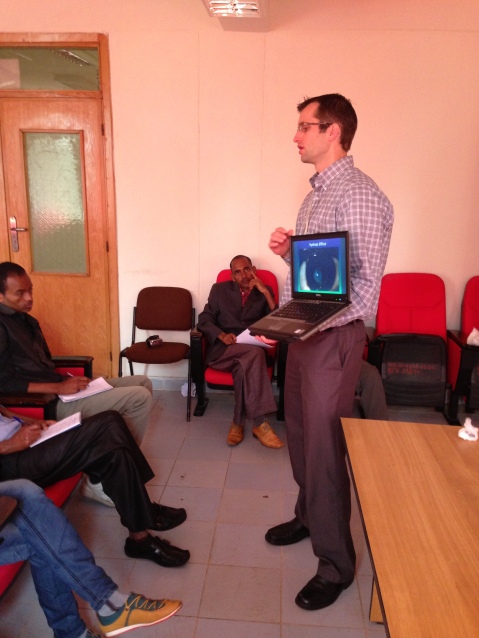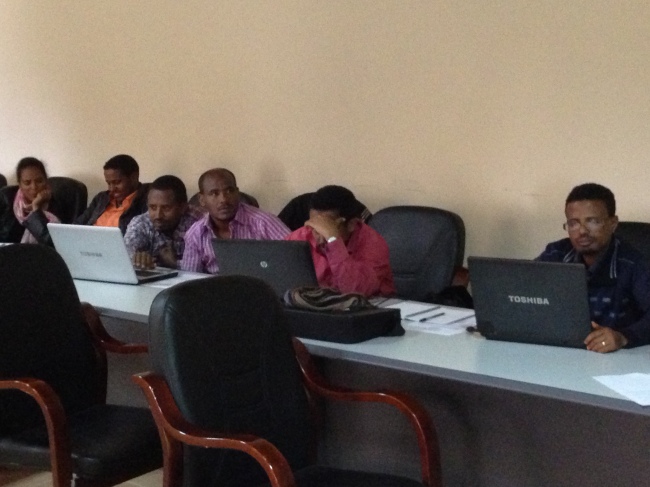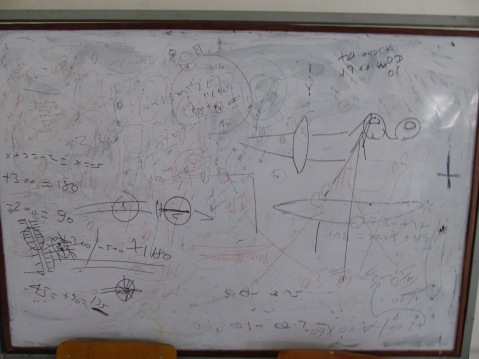Keep up-to-date with new blog posts
Check out our latest blog posts here: http://u.osu.edu/onehealth/blog-2/
The most recent post describes University of Gondar’s field training for veterinary medicine students.
Thank you for your interest.
Dear readers,
Thank you for your attention to our insights from Ohio State’s 2013 activities in Ethiopia. This site has now moved.
Please join us at u.osu.edu/onehealth. We have more information about our partners and projects on the new site.
You can continue to follow our personal insights on the blog section of u.osu.edu/onehealth.
Sincerely,
The Ohio State One Health Task Force
An island monastery in Lake Tana
By Laura Binkley, student
Ohio State College of Public Health and
School of Environment and Natural Resources
During a quick visit to Bahar Dar, we were able to venture into Lake Tana. Lake Tana is the widest lake in Ethiopia and one of the largest lakes in all of Africa. Emptying into the Nile River, it contains several islands. Many of these islands possess ancient monasteries that have been well preserved by the monks. We decided to take a boat tour that would take us out to one of the islands.
Traveling across the lake provided us with fascinating views of the landscape and a strong sense of calm after an intense week of data collection. As we moved through the lake we passed giant pelicans, townspeople cleaning their clothes in the lake, and fisherman fishing in hand-made papyrus boats that seemed impossible to balance in. On our way to the island we crossed paths with the Nile River itself which was a pretty incredible experience.
When we stepped off of the boat onto the island we were surrounded by green. A vast field included papyrus plants and a variety of trees and plants from coffee to mango and banana. We walked down a small mud path towards the monastery where we were greeted by villagers selling fresh fruits and tiny handmade papyrus boat souvenirs among other things.
Once we arrived at the monastery we paid our fee to enter and were then led by an elderly monk to a small stand that he called a museum. He explained that the monastery had been around since the 12th century and then proceeded to show us the contents of the museum which consisted of ancient books, an emperor’s robe, elaborate crosses, and other priceless valuables of the church.
Once our tour of the museum stand was complete the monk lead us to the monastery itself. The monasteries on all of the islands are circular in shape with three main parts. We started at the outer part which consisted of a small wall left open to the outside that surrounded the monastery. Here was where we were to take off our shoes before entering the sacred place.
We were then lead inside to the second part. This section was dark except for the little light that illuminated the walls which were covered in beautiful Christian art pieces. There were also ancient worship drums that were made of clay and covered in hide. We were not allowed to enter the third section where a sacred arc in honor of Mary was hidden. I can only imagine how fascinating it must look.
Once we had a chance to look around for a bit we grabbed our shoes and exited the monastery. We thanked the monk and then headed back down the trail to the boat that had been waiting for us. The boat then headed back towards the mainland again. It was all a very surreal experience that can only be found here in Ethiopia.
Haggling for souvenirs
By Korbin Smith
Student, Ohio State College of Medicine
School of Health and Rehabilitation Sciences
After the conference in Addis finished, we were about to do some touring throughout the capital of Ethiopia. Downtown Addis has the biggest market in all of Africa. This market is essentially hundreds of small stores all selling a mixture of food, clothes, and souvenirs. Growing up in a family in which going to garage sales was a regular family activity, I was prepared for the price negotiations. In other words, “this wasn’t my first rodeo.”
While I did have a decent amount of birr to spend on souvenirs, I wasn’t giving up my money without a price battle.
After feeling out the atmosphere of many different shops, I began the negotiations. I am not going to name the specific things I was purchasing to avoid ruining the surprise for people back home, but I can describe my negotiation strategy.
I picked two items I liked in one store, and the owner told me 300 birr. I decided that it would be a good strategy to offer half the asking price. After being shocked that I was haggling, the owner said 250. I followed up with 200. Ultimately I said 215 as my final offer, and they took it saving me 75 birr. (That one is for you Dad.)
Ethics Engagement in Ethiopia
By Karla Zadnik, OD, PhD
College of Optometry
The Summer Institute’s research ethics course chugged along today. I started late, mostly because I didn’t realize most of my students were in the courtyard just outside the classroom in the bright morning sunshine, waiting for me to begin speaking. I lectured on the tenets of the Declaration of Helsinki (OSU faculty—you all remember those, right?) and the ethical use of animals in research (thanks Donna McCarthy!), but the highlight turned out to be the case study discussions.
I presented a case I’d heard at the 2008 Public Responsibility in Medicine & Research meeting. It weaves the tale of an imaginary city, Blovar, which is under siege such that its children are subsisting on an inadequate 400 calories. An entrepreneurial, mythical scientist who studies nutrition and brain function in children appears on the scene to conduct a purely observational study of the children. After carefully reading the case, the course attendees “went to town.” After their small group analysis of the case, I facilitated a discussion of the case. They didn’t need me. There were marked differences of opinion in the class. One attendee drew historical correlates, while another took the role of the Principal Investigator, cautioning the audience to assume that fellow scientists generally want to do a good job. The points made were lively, vehement even, yet collegial. All this before lunch!
The afternoon’s soundtrack was a thunderstorm of biblical proportions that hammered the roof of the classroom and lit up the sky. We all raised our voices in tune with the rain and created a chorus, celebrating the hard, thoughtful work of teaching and learning research-related ethics.
Power Up!
By Karla Zadnik, OD, PhD; DeanVannasdale, OD, PhD; and Andrew Emch, OD, MS
College of Optometry
Dr. Andrew and Dr. Dean spent their second full day at the Department of Optometry, University of Gondar. At the Gondar faculty’s request, they taught a crash course on keratoconus, irregular corneas, and specialty contact lens fitting. The faculty was clearly eager to learn and are well-educated. They asked complex questions, almost stumping Ohio State’s favorite sons with evidence-based questions that required detailed knowledge of disease epidemiology.
After a jet-lag antidote lunch that included Coke and strong coffee, they went back to tour the Department’s clinic. The facility is adequately sized to educate the enrolled students.
Unfortunately, frequent, rolling power outages regularly limit patient care, on average two days a week. Equipment is a limitation as well. The clinical equipment, shared between Optometry and Ophthalmology, is a rate-limiting step for both education and eye care delivery.
In spite of these challenges, the young faculty (average age 27 years old), all products of the initial years of the program, are dedicated to building educational capacity, departmental independence, and high standards for the provision of comprehensive eye examinations.
Research ethics in Ethiopia
By Karla Zadnik, OD, PhD
College of Optometry
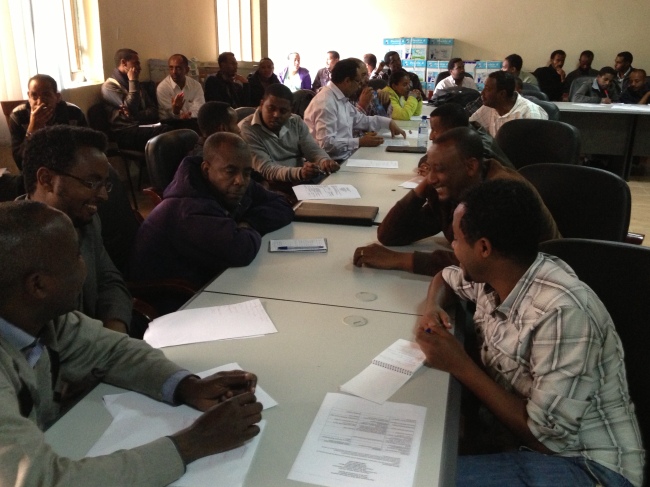 I was hosted by Dr. Seleshe Nigatu of the University of Gondar as I opened the research ethics class in the Summer Institute with a discussion of the Tuskegee Study. The study is the U.S.’s 1978 Belmont Report with its basic principles of respect for persons, beneficence/nonmaleficence, and justice. The class of almost 60 people from the University of Gondar and Addis Ababa University, along with other Ethiopian institutions of higher learning, had expertise ranging across medicine, veterinary medicine, economics, and pharmacy. The photographs depict the engaged students. In the late afternoon, the participants tackled their first two case studies, one on
I was hosted by Dr. Seleshe Nigatu of the University of Gondar as I opened the research ethics class in the Summer Institute with a discussion of the Tuskegee Study. The study is the U.S.’s 1978 Belmont Report with its basic principles of respect for persons, beneficence/nonmaleficence, and justice. The class of almost 60 people from the University of Gondar and Addis Ababa University, along with other Ethiopian institutions of higher learning, had expertise ranging across medicine, veterinary medicine, economics, and pharmacy. The photographs depict the engaged students. In the late afternoon, the participants tackled their first two case studies, one on 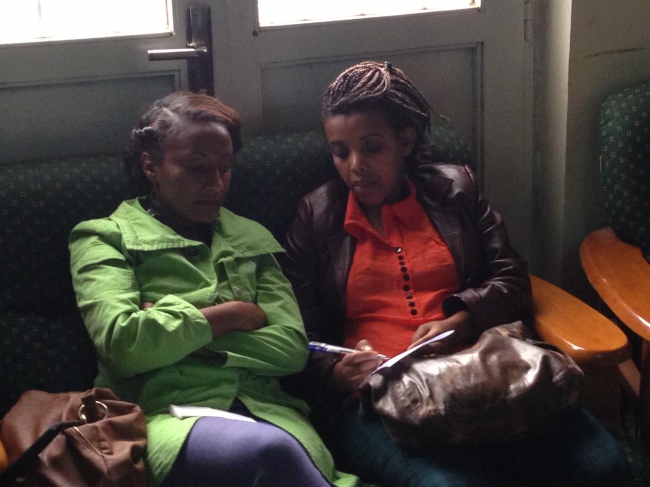
reporting of results to an industry sponsor and the other an accurate analysis of a case of subtle plagiarism but plagiarism nonetheless. Tomorrow, the class tackles animal care and use in research and biorepositories (thanks to Donna McCarthy and Mark Merrick and their lecture materials).
The transition from Addis Ababa to Gondar was ably assisted by advice from Dr. Jodi Ford from the College of Nursing, who taught research methods at the University of Gondar earlier in July.
Optometry Pride, Worldwide
By Karla Zadnik, OD, PhD
College of Optometry
Yesterday, Ohio State College of Optometry faculty members, Dr. Dean VanNasdale and Dr. Andrew Emch made their way to the Department of Optometry housed in the International Fistula Training Center at the University of Gondar. The Department’s mission statement reads, “The profession of optometry offers comprehensive eye care services to all mankind. The training program has the philosophy of producing skilled manpower equipped with adequate knowledge, skills and attitude to deliver such eye care services in the most ethical manner, both on the national and international level.” What institution wouldn’t aspire to that?
Hosted by Department Director, Destaya Shiferaw, and several of the faculty, Dr. Andrew and Dr. Dean were struck by many things that surprised them. Dr. Dean found that the optometry bond ran deep, declaring the faculty at UoG “more similar than different to us,” and he was struck by the faculty’s honesty and candor and that they truly held nothing back. Dr. Andrew declared the faculty, “Enthusiastic and proud, yet self-aware.” Unusual characteristics for faculty members, don’t you think?
Destaya and colleagues are clearly altruistic, focused on the larger community and the optometric profession. They had a clear “vision” of the future of optometry in the country and all of Africa, and envision themselves as leaders in public health as it relates to eye care in east Africa. The two teams spent several hours in completely open, engaged communication. They return tomorrow to tour the clinical facilities and discuss strategies for advanced contact lens fitting instruction and practice in the UoG clinic. Stay tuned.








